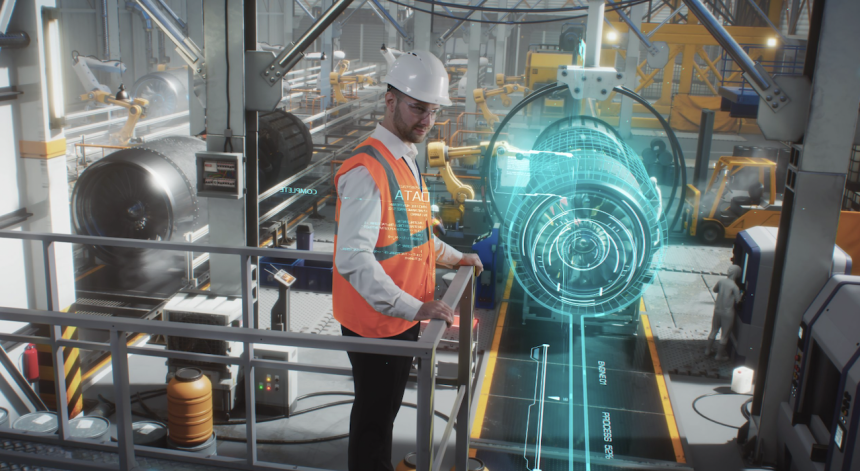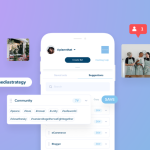The construction and roofing industries have always been vital to our infrastructure, and for years, they’ve been evolving with technology. Today, we’re at a point where AI—artificial intelligence—is beginning to make a real impact, particularly in how these industries operate. From improving the efficiency of construction projects to making roofing systems more reliable and safer, AI is set to reshape these fields in significant ways. This transformation is only just beginning, and its effects are bound to deepen as time goes on.
The Role of AI in Construction: Revolutionizing the Industry
In construction, AI is starting to help in a variety of ways, but perhaps the most significant area of impact is in planning and project management. For decades, construction projects have faced challenges in keeping things on track, both in terms of cost and timelines. AI changes the game by offering predictive insights. By analyzing historical data from past projects, AI systems can forecast how long a project might take, how much it will cost, and where the risks are. This kind of forecasting could drastically reduce the chance of delays or unexpected costs.
Another area where AI shines is in automation. Many of the tasks that traditionally require human oversight, like scheduling, tracking progress, and inventory management, can be automated. For example, counting with an AI-powered gutter estimate software can help in optimizing how resources are allocated across a project compared to the quote given to the client, keeping everything running smoothly without requiring constant manual input. This saves time and reduces errors—allowing the people involved to focus on more complex, creative, and value-adding tasks. Moreover, AI can also improve how materials are sourced. By predicting demand more accurately, it reduces waste and ensures that the right amount of materials arrive at the right time.
Beyond administrative tasks, AI is also being used on job sites. Robots powered by AI can handle repetitive or dangerous tasks such as bricklaying, welding, or pouring concrete. In high-risk environments, like those found on construction sites, robots can work where human workers can’t, reducing accidents and improving safety. As we move forward, it’s easy to imagine a future where AI-driven machinery plays a larger role, completing tasks faster, more accurately, and often in less time.
Drones and Robotics: A New Era for Construction
Drones and robotics are already beginning to make waves in the construction industry, and their presence will only grow in the coming years. Drones equipped with cameras and sensors are being used to monitor the progress of a project from above. These drones can capture images and videos of construction sites in real time, making it easier to track work, monitor compliance with safety regulations, and inspect difficult-to-reach areas. AI then takes this data and uses image recognition to spot potential issues, such as structural flaws or safety risks, without requiring workers to physically inspect the area.
Another area where robotics is playing a key role is in 3D printing. AI can be used to design complex building elements, which 3D printers can then create with precision. This means that certain construction components—whether walls, facades, or even entire buildings—can be produced more quickly, using fewer materials and reducing waste. Over time, this technology has the potential to significantly reduce the overall cost of construction while promoting more sustainable building practices.
AI in Roofing: Smarter, Safer, and More Efficient
The roofing industry is also starting to tap into the power of AI, with improvements that are making roof installation, inspections, and maintenance more efficient and reliable. Traditionally, roofing involves a lot of manual labor, with workers climbing up on roofs to inspect them for damage or wear. While this has worked for decades, it’s far from efficient or safe.
Now, AI-driven drones are being used to inspect roofs from the ground. These drones can capture high-resolution images of a roof’s surface, and AI algorithms can analyze the data to identify potential issues such as cracks, missing shingles, or leaks. This means that inspections can be done much faster and without putting workers in harm’s way. These drones also allow for more regular inspections, helping property owners catch small problems before they escalate into major repairs, ultimately saving money and extending the life of the roof.
AI is also making waves in roof maintenance with predictive technology. Traditional roof inspections are reactive, meaning that a roof is usually inspected only after it has been damaged or worn out. AI, on the other hand, can continuously monitor a roof’s condition, analyzing factors like temperature, humidity, and even structural movements to predict when a roof might need repairs. By staying ahead of issues, building owners can avoid costly emergency fixes and extend the lifespan of their roofing systems.
Improving Safety in Construction and Roofing with AI
Safety on construction sites has always been a major concern. Every year, thousands of workers are injured in construction-related accidents. AI is helping to address this issue by providing smarter, real-time safety monitoring systems. Wearable devices, such as smart helmets and vests, are already being used to track a worker’s location and vital signs, alerting supervisors if someone is at risk of exhaustion or entering a hazardous area. These devices can even send warnings to workers if they’re getting too close to a dangerous edge or if their movements suggest they’re at risk of a fall.
For roofing specifically, safety is especially critical. Workers frequently find themselves on steep, unstable surfaces and at high elevations, making falls a constant threat. AI-based systems that monitor worker movements and use sensors to detect dangerous situations can help reduce accidents. Furthermore, AI-driven predictive analytics can anticipate hazardous weather conditions, such as strong winds or rain, which may pose risks on roofing jobs, allowing companies to pause work or take extra precautions when needed.
Sustainable Practices: AI and Green Building
Another exciting area where AI is having a transformative impact is sustainability. As the world becomes more focused on reducing its environmental footprint, both construction and roofing are seeing an increased emphasis on green building practices. AI can optimize building designs to make them more energy-efficient, considering factors like insulation, orientation, and natural light. For example, AI algorithms can simulate a building’s energy usage based on various design parameters, allowing architects to tweak the design for optimal energy savings.
In roofing, AI can help design systems that improve a building’s energy efficiency. AI can help create roofing materials that are more reflective, insulating, or capable of generating solar energy. With AI’s ability to analyze local climate data, roofs can be designed to either reflect sunlight and reduce heat absorption in warm climates or trap heat in colder climates, ultimately improving the building’s energy efficiency.
The Road Ahead: Challenges and Opportunities
While the future of AI in construction and roofing is incredibly promising, there are still challenges to overcome. The initial costs of adopting AI technology can be high, and small businesses, in particular, may find it difficult to make the leap. Furthermore, the workforce will need to adapt. Upskilling workers and providing training in AI systems will be crucial for these technologies to succeed in the long term.
Security is another concern. With all the data being collected by AI-powered drones, robots, and sensors, ensuring that this data is protected from cyber threats will be essential. Trust in these systems will depend on how secure and reliable they are, both in terms of functionality and privacy.
Nevertheless, as AI continues to evolve, its potential to revolutionize construction and roofing grows. The advancements we see today are just the beginning, and the integration of AI will undoubtedly make construction safer, more efficient, and more sustainable in the years to come.
Conclusion
Looking ahead, the future of AI in construction and roofing holds immense promise. From improving efficiency and safety to creating more sustainable building practices, AI is already making waves in these industries. As these technologies continue to advance, the way we design, build, and maintain our infrastructure will transform. Companies that embrace AI will be at the forefront of this shift, leading the way in innovation and ensuring that the construction and roofing industries evolve with the times. The future is here, and it’s driven by AI.
Lynn Martelli is an editor at Readability. She received her MFA in Creative Writing from Antioch University and has worked as an editor for over 10 years. Lynn has edited a wide variety of books, including fiction, non-fiction, memoirs, and more. In her free time, Lynn enjoys reading, writing, and spending time with her family and friends.















